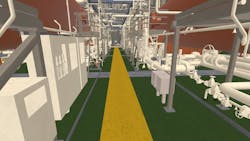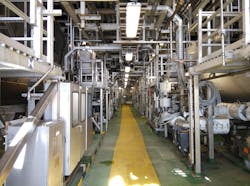Offshore staff
LONDON – Neptune Energy has completed a virtual reality (VR) pilot program on the Gjøa production platform in the Norwegian North Sea.
PaleBlue developed the technology to train astronauts traveling to the International Space Station.
According to Neptune, this was the first application to an offshore installation. Personnel using VR headsets were able to interact from shore with a realistic 3D model of the Gjøa facility.
Martin Borthne, director of Operations at Neptune Norway, said: “The…solution allows employees and contractors to build up knowledge and awareness of the complex multi-level facility without the need to travel. Planning work operations will be safer and more efficient.
“The initiative will together with other projects see an estimated reduction of 30 offshore trips per year. We expect this to grow in the years ahead as digitalization further enhances collaboration over distance, bringing immediate access to expertise and enabling preparation of activities to be carried out from onshore.”
Initially Neptune will use the technology for familiarization and safety training, with the scope later extended to cover tasks such as simulations related to HSE events, or to assess how platform modifications will appear before they have been performed.
In addition, the multi-user function will allow offshore personnel to communicate with onshore personnel in the virtual world.
Egil Thomas Andersen, account director at PaleBlue, said: “The restrictions and all the consequences of COVID-19 have introduced challenges to operations for many companies.
“By doing the familiarization training in a virtual world, even from home, companies can overcome travelling restrictions, save time, costs and emissions, and [staff] will be 100% prepared with crucial knowledge of the facility when they physically arrive offshore.”
Neptune also uses laser scan technology to carry out detailed engineering for subsea developments that will be tied back to Gjøa.
06/10/2021





